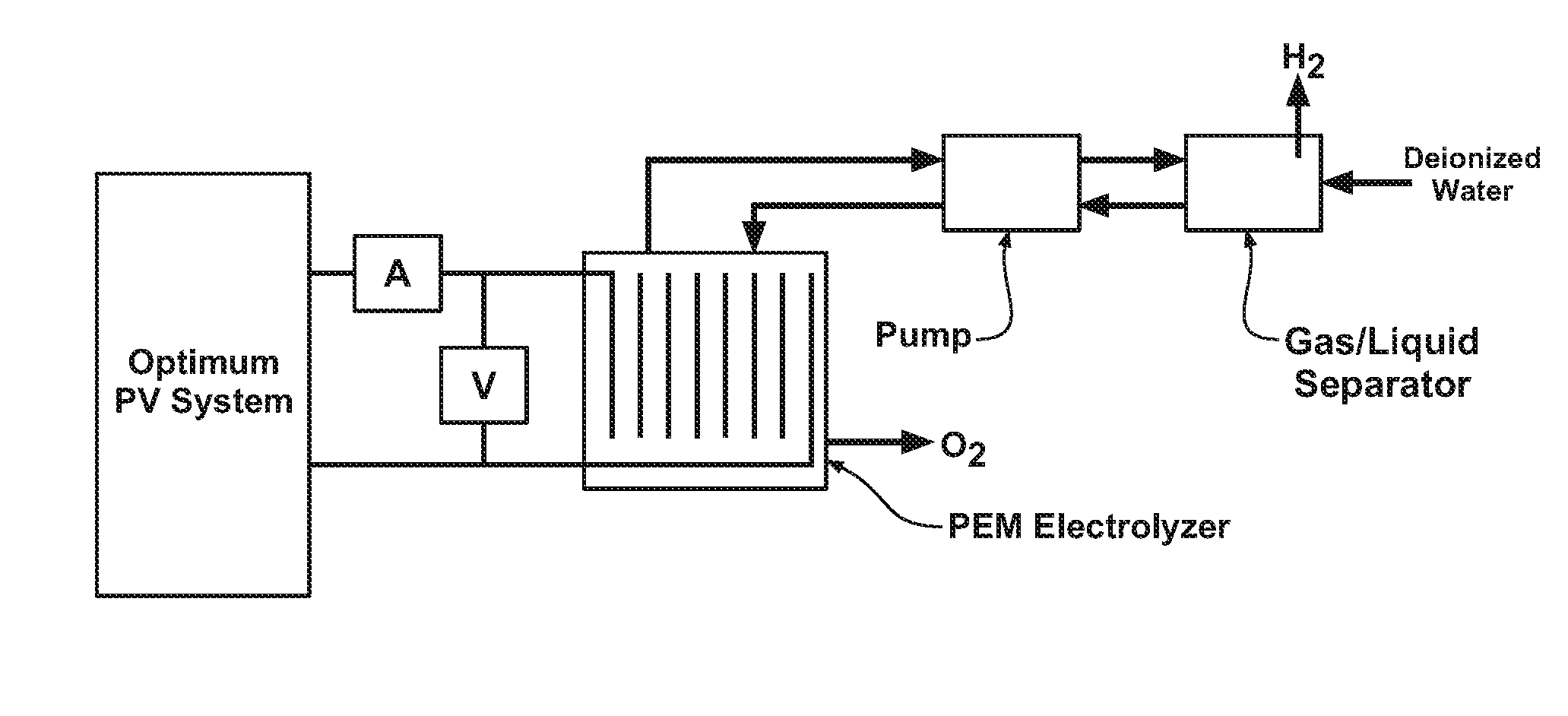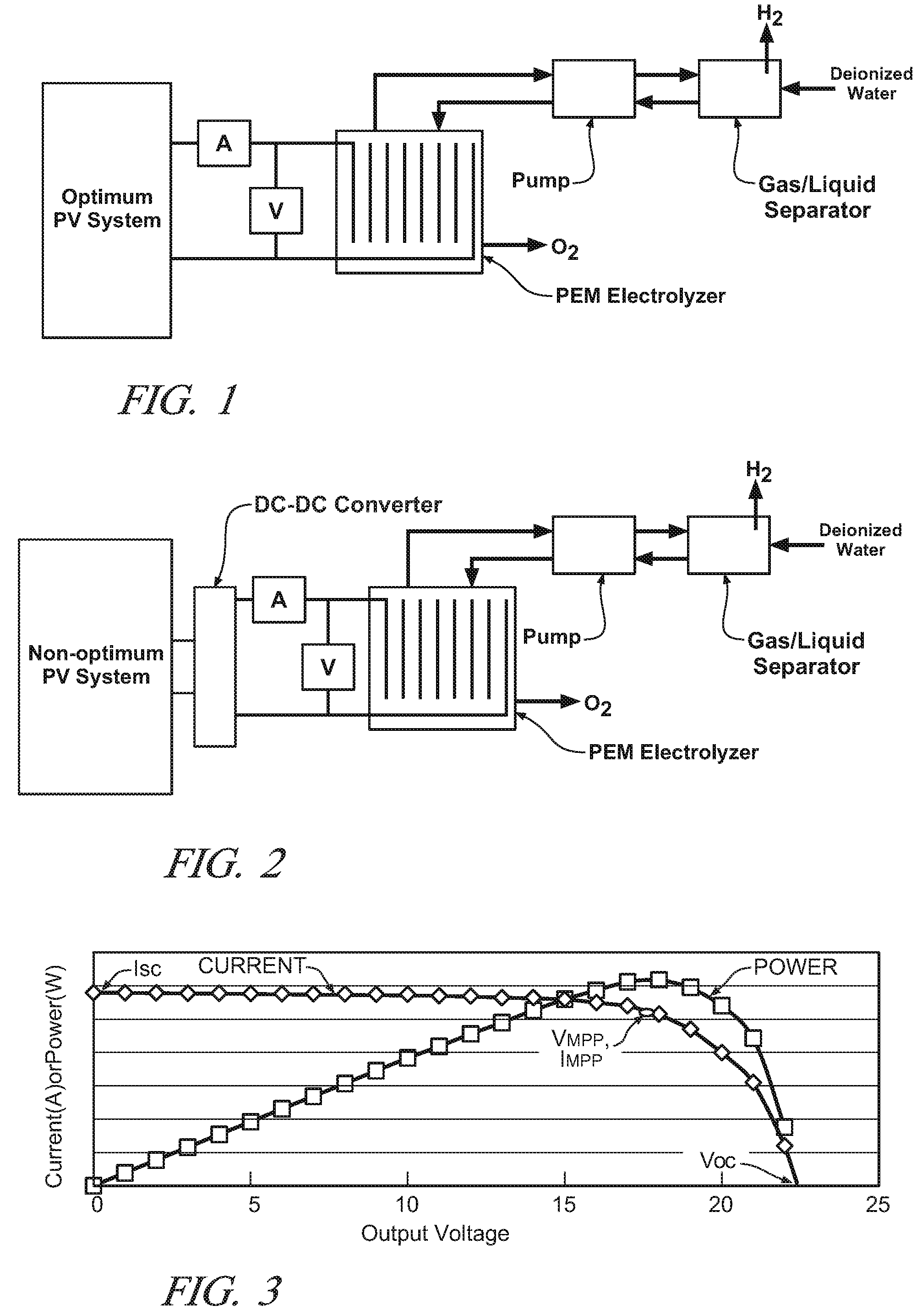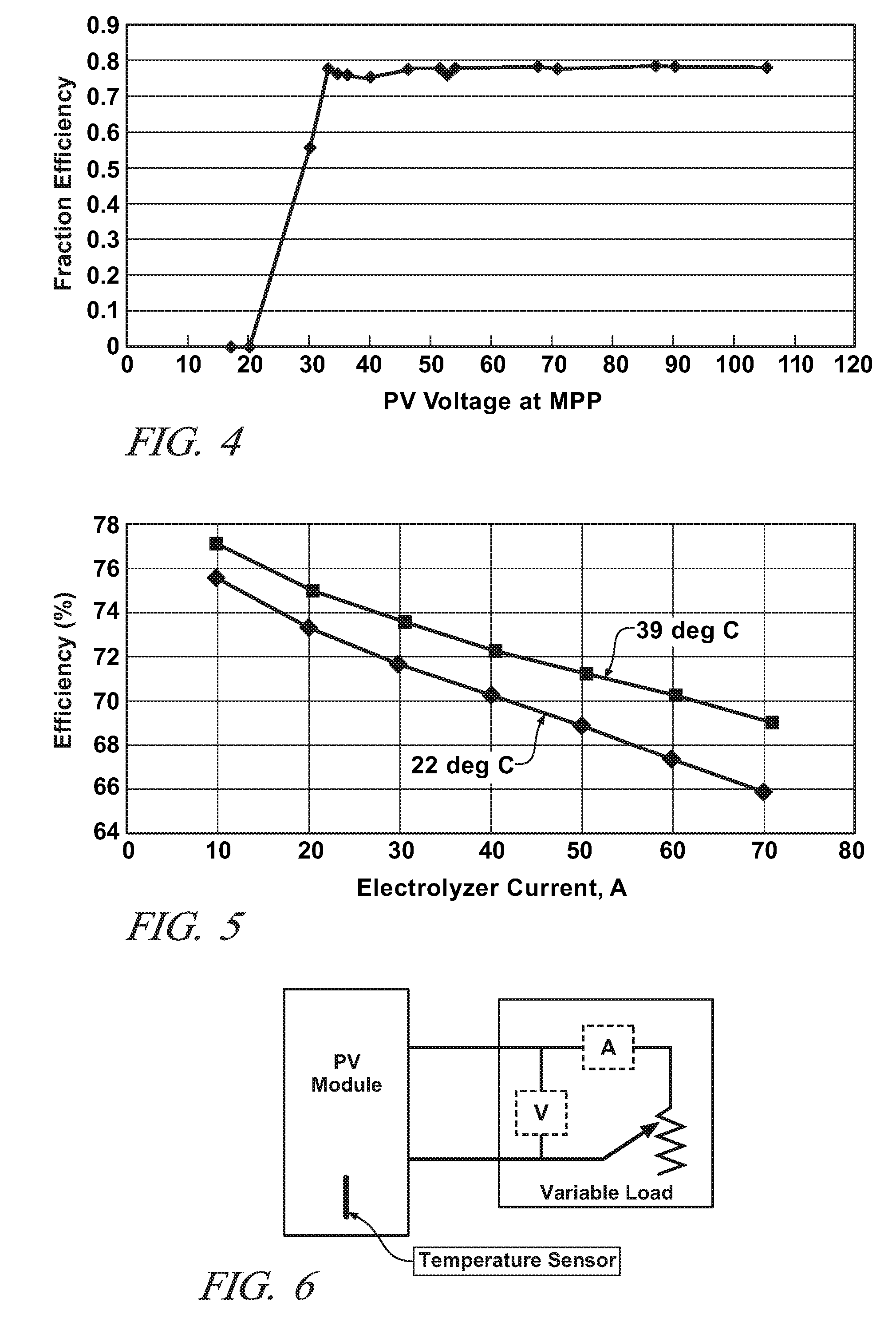Optimizing photovoltaic-electrolyzer efficiency
a photovoltaic and electrolyzer technology, applied in the direction of electrolyzers, instruments, energy inputs, etc., can solve the problems of particularly variable ambient temperature and solar irradiance of the pv system, and achieve the effect of efficient hydrogen production
- Summary
- Abstract
- Description
- Claims
- Application Information
AI Technical Summary
Benefits of technology
Problems solved by technology
Method used
Image
Examples
example optimization case 1
[0091] For the PV module (Sanyo HIP-190) that we tested using the electronic variable load system as shown in FIGS. 7 and 8, we found that the measured:
Voltage at the MPP (Vmpp)=52 volts at 41° C. [from FIG. 7] [the Vmpp at STC, 25° C., was 54.8 volts from the manufacturer specifications]
Power at MPP (Pmax)=180 Watts 41° C. [from FIG. 7][the Pmax at STC was 190 W from the manufacturer specifications]
The maximum power current (Impp) from each PV module will be 180 Watts / 52 volts=3.46 amps at 41° C.
Temperature coefficient of Pmax (% of total P / ° C.)=−0.30% [from FIG. 8] [the coefficient was also −0.30% % of total P / ° C. from the manufacturer specifications]
Temperature coefficient of Vmpp (volts / ° C.)˜0.3%×180 VA / 3.46 A=0.16 volts / ° C.
Case 2—Control Example (Not to be Optimized):
[0092] All PV module parameters were the same as Case 1.
Step 5—
[0093] Next, the effect of electrolyzer operating voltage on the efficiency of solar-powered photovoltaic-electrolyzer systems for generating h...
case 2
l Example (Not to be Optimized):
[0104] Nothing is done to change the voltage, current output, or temperature of the PV system.
In Optimization Case 3:
[0105] The steady state operating temperature in another cool sunny period is 41° C. All the electrolyzer parameters are the same as Case 1 except that the redesigned electrolyzer in this case (Case 2) has 25 electrolysis cells connected in series giving a Voper of 45 volts.
[0106] The PV module was redesigned to have 83 solar cells in series to produce a Vmpp of 45 volts at 41° C. [The original PV module in Case 1 had 96 solar cells connected in series to give 52 volts at 41° C.]
In Optimization Case 4:
[0107] All the electrolyzer parameters are as described in Case 1.
[0108] At the PV operating temperature, the only PV modules available for use have a Vmpp of 36 volts.
[0109] The PV modules are connected to a DC-DC converter or charge controller system with an input voltage range that includes 36 volts (30-40 volts for example) and...
case 1
In
[0113] The electrolyzer efficiency is 70%. [0114] The PV system efficiency is 18.2% [0115] The overall solar energy to hydrogen conversion efficiency is 12.7% [0116] The hydrogen production rate is 0.10 kg / hour. [0117] The PV cell area is 26×1.027 m2=26.7 m2. (measured area of the PV cells, usually obtainable from the manufacturer)
In Case 2—Control Example (Not to be Optimized): [0118] The electrolyzer efficiency is 62%. [0119] The PV system efficiency=150 watts / 190 watts×19%=15% [0120] The overall solar energy to hydrogen conversion efficiency is 9% Hydrogen rate=Ioper / (N×26,806 amps / kg / hour)=111×20 / 26,806=0.083 kg / hour[0121] The PV cell area is 30×1.027 m2=30.8 m2.
[0122] Because the electrolyzer and the PV system were both not optimized Case 2 required a greater number, area, and cost of PV modules but produces less hydrogen per hour.
PUM
| Property | Measurement | Unit |
|---|---|---|
| temperature | aaaaa | aaaaa |
| DC voltage | aaaaa | aaaaa |
| temperatures | aaaaa | aaaaa |
Abstract
Description
Claims
Application Information
 Login to View More
Login to View More - R&D
- Intellectual Property
- Life Sciences
- Materials
- Tech Scout
- Unparalleled Data Quality
- Higher Quality Content
- 60% Fewer Hallucinations
Browse by: Latest US Patents, China's latest patents, Technical Efficacy Thesaurus, Application Domain, Technology Topic, Popular Technical Reports.
© 2025 PatSnap. All rights reserved.Legal|Privacy policy|Modern Slavery Act Transparency Statement|Sitemap|About US| Contact US: help@patsnap.com



